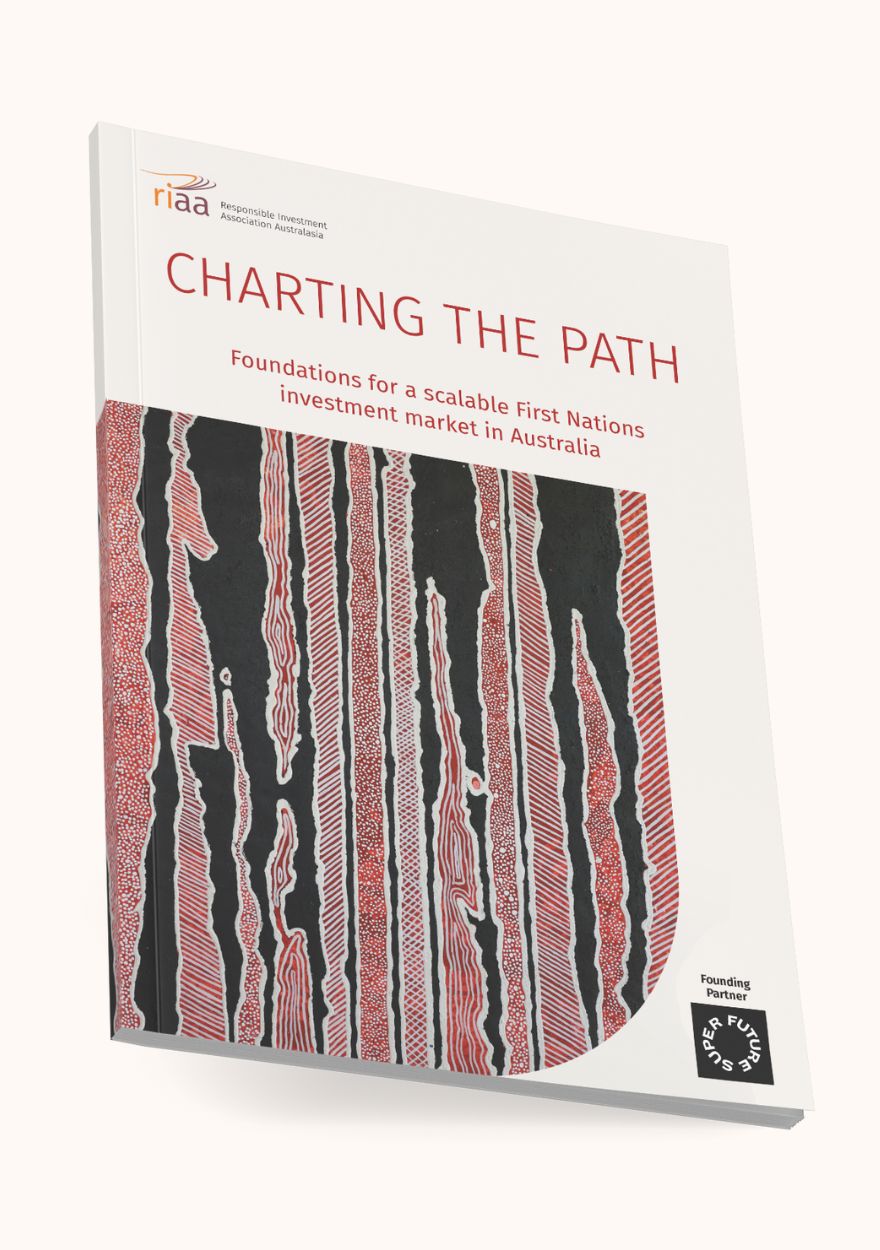This paper aims to build an understanding of how investment markets currently engage with First Nations peoples and economies. It provides an overview of current practice, explores key challenges and opportunities for action, and outlines areas for further research.
Summary
The opportunity is clear. With the right enabling conditions, Australia can develop a values aligned investment ecosystem that honours Country, culture, and community while creating long-term prosperity and public value. First Nations peoples have the leadership, capability, and solutions. What is required now is for the broader system to meet them with respect, with resources, and with a shared commitment to a more just and sustainable future.
Founding Partner





Latest best practice






Pathways to change



Representation
Increasing the participation and leadership of First Nations peoples, communities and enterprises across the investment ecosystem.
Without First Nations voices in positions of influence, capital decisions risk reinforcing systemic exclusion, and may not be fit-for-purpose to engage in opportunities. Representation strengthens investment legitimacy, ensures cultural and contextual knowledge is present in decision-making, and supports better alignment between capital and the priorities of First Nations peoples, communities, and enterprises.
Develop targeted professional pipelines, strengthen understanding of First Nations considerations within governance skill matrices and recognise First Nations asset owners as peers in the investment system. This will see stronger representation within investment decision-making roles, executive leadership, board appointments and investor communities of practice.



Systems alignment
Transforming institutionalised investment norms, governance, and accountability mechanisms to reflect and uphold First Nations rights, values, and ambitions.
Institutional structures, not just individuals, must carry the responsibility for First Nations rights, values and ambitions. Without system-level considerations, ecosystem and market development is likely to face challenges related to scale and long-term durability.
Embed stakeholder and cultural accountability in governance, stewardship and disclosure practices. Align reporting frameworks with First Nations priorities. Adopt supporting tools that set clear expectations for responsible investment with First Nations peoples, communities and enterprises, such as the Dhawura Ngilan Business and Investor Guides on cultural heritage protection.



Capital flows
Enabling and directing the flow of investment capital to support First Nations-led economic development and community wellbeing.
Without financial access and innovation, self-determined development remains out of reach. Capital must reflect the rights, values, ambitions and pace of First Nations peoples, communities and entities.
Ensure capital systems are co-designed with First Nations leaders and grounded in cultural authority, community priorities and long-term value creation. Develop investable pipelines, encourage catalytic capital, and expand flexible financial structures, such as blended and concessional finance, to support First Nations-led enterprises. Establish purpose-built intermediaries to engage institutional investors and enable scalable participation from private and philanthropic actors.









Long-Term Vision
Why this work matters
The investment community is a critical actor in local and global economies, and the systems of civil society. Investors play an important role in mitigating risk, creating shared value, and shaping long-term solutions to achieve better outcomes for First Nations peoples.
At a minimum, responsible investors are uniquely placed to ensure economic activities uphold standards of human rights, safeguard cultural heritage, and avoid specific harms to both people and Country.
Moreover, this can include a positive contribution to the gap that persists between the socioeconomic outcomes experienced by First Nations peoples in Australia and those of non-Indigenous populations. This disparity is the result of generations of policies and actions designed to assert and maintain control over First Nations peoples, their lands, economies, and resources. In the spirit of truth-telling, it is also important to recognise that Australia’s finance sector has been intertwined with these broader processes, often without due regard, and at times leading to significant harm for First Nations peoples.
Yet, alongside these systemic barriers, First Nations peoples continue to demonstrate resilience, cultural strength, innovation and leadership. Despite this, and a demonstrable growth in businesses, First Nations economies remain starved of capital, limiting opportunities for self-determined economic participation and development.
RIAA’s interest in this work is grounded in the recognition that the decisions investors make can either entrench long-standing disadvantage, or help address it. Addressing the structural drivers of inequality in investment markets requires not only recognising past and ongoing injustices, but also enabling, valuing and amplifying First Nations leadership, knowledge, participation, and ownership within the financial system. While this lens underpins RIAA’s commitment to facilitating research and discourse in this area, we also recognise that individual investors will be motivated by a range of factors – including risk management, commercial opportunities, and impact.
Given this historical context and the sector’s ongoing influence on economic and social outcomes, responsible investors have a unique opportunity to help address structural inequities and contribute to building a strong and self-determined First Nations economy.
Project Contributors
Lead Author: Caleb Adams
Caleb is Director of ESG and Sustainable Investment at Evans & Partners (E&P), one of Australia’s largest private wealth management firms. E&P provides tailored investment advice and portfolio management services, including a particular focus on for-purpose and First Nations clients. As a proud Wulli Wulli man,descendant of the Auburn Hawkwood peoples, and with extensive experience across First Nations affairs and impact, Caleb leads E&P’s firm-wide First Nations Strategy.
Project Lead: William Leak
William is a Senior Sustainable Investment Analyst in Mercer's Pacific investment management team. Mercer specialises in providing investment solutions and advice to help our clients across the Pacific manage risks, capture opportunities, and achieve their financial objectives. This includes one of Australia’s leading corporate super funds (Mercer Super). William is a proud Wiradjuri man, passionate about the intersection of First Nations Peoples and investment markets and leads Mercer's efforts in this space.
We would also like to acknowledge the contributions of:
• Nick Wappett, Research Consultant
• Professor Robynne Quiggin AO, Project Advisor
• RIAA staff, Working Group members, and broader network, who contributed to and reviewed this document.


